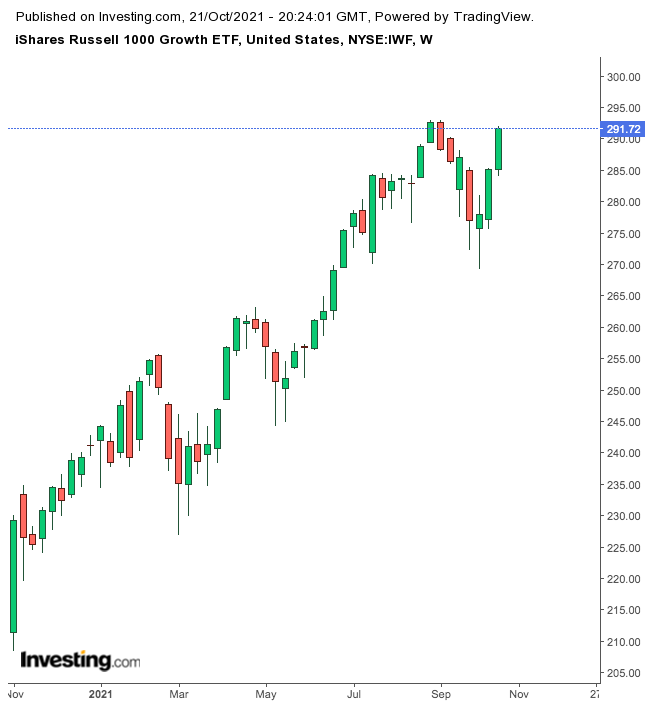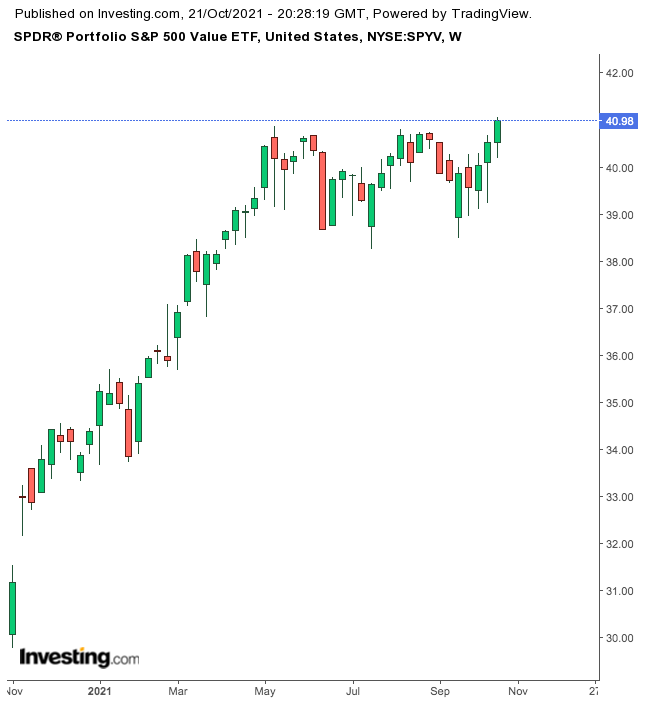Exchange-traded funds (ETFs) continue to see significant growth as an asset class. In 1993, the SPDR® S&P 500 (NYSE:SPY), which tracks the returns of the S&P 500 index, was the first ETF to be listed in the US. Today, there are more than 2,500 ETFs trading in the US with well over $6.5 trillion in assets.
Warren Buffett, one of the most successful investors of all time, believes retail investors should own low-cost index funds, especially an ETF that tracks the S&P 500 index. It allows even new investors access to the growth of some of the largest businesses in the US. Both the index and SPY are up almost 21% so far this year. They hit record highs in early September
Today we introduces two other ETFs that could be appropriate for new investors.
1. iShares Russell 1000 Growth ETF
Current Price: $291.72
52-Week Range: $207.63 - $293.01
Dividend Yield: 0.51%
Expense Ratio: 0.19% per year
The iShares Russell 1000 Growth ETF (NYSE:IWF) invests in US-listed large- and mid-capitalization equities that could grow at an above-average rate relative to the market. The fund started trading May 2000.

IWF, which follows the Russell 1000 Growth Index, currently has 501 holdings. The information technology sector has the largest slice, with 44.75%. Next in line are consumer discretionary (18.52%), communications (12.48%) and health-care (8.79%) sectors.
The leading 10 holdings comprise about 45% of net assets of $74.4 billion. Apple (NASDAQ:AAPL) and Microsoft (NASDAQ:MSFT) have the top spots, with 10.39% and 10.27%, respectively. This means that large swings in these two names are likely to affect the price of the ETF.
Other names with large weightings include Amazon (NASDAQ:AMZN), Facebook (NASDAQ:FB), Alphabet (NASDAQ:GOOGL) (NASDAQ:GOOG), Tesla (NASDAQ:TSLA) and NVIDIA (NASDAQ:NVDA).
IWF returned 20.3% so far in 2021 and 30.9% over the past 12 months. The fund also hit a record high in September. P/E and P/B ratios stand at 46.84x and 14.80x. Put another way, investors have been willing to reward these stocks—mostly tech darlings—for their earnings growth potential.
Many of the leading names in the ETF are getting ready to report quarterly metrics in the coming days. Therefore, we could see increased choppiness and short-term profit-taking. Interested readers could regard the $280 level as a better entry point.
2. SPDR Portfolio S&P 500 Value ETF
Current Price: $40.98
52-Week Range: $29.19 - $41.06
Fund Dividend Yield: 2.01%
Expense Ratio: 0.04 % per year
From growth shares, we move on to value names. The SPDR® Portfolio S&P 500 Value ETF (NYSE:SPYV) gives access to firms that are regarded as undervalued relative to their peers or the broader market. Since its inception in September 2000, assets under management have grown close to $13.1 billion.

SPYV, which tracks the S&P 500 Value Index, has 431 holdings. The benchmark index is comprised of firms in the S&P 500 that exhibit value characteristics based on earnings-to-price ratio, book-value-to-price ratio and sales-to-price ratio.
The most important sectors by weighting are financials (21.70%), health care (14.49%), industrials (11.44%), IT (11.09%) and consumer staples (8.74%).
About 18% of the fund is invested in the leading 10 stocks. Berkshire Hathaway B (NYSE:BRKb), JPMorgan Chase (NYSE:JPM), Walt Disney (NYSE:DIS), Exxon Mobil (NYSE:XOM), Johnson & Johnson (NYSE:JNJ) and Cisco Systems (NASDAQ:CSCO) are currently among the top stocks in the roster.
The ETF is up about 32.3% in the past 52 weeks and 18.9% YTD. SPYV saw an all-time high on Oct. 20. The fund’s P/E and P/B ratios are 16.61x and 2.71x, respectively. A potential decline toward the $39 level would improve the margin of safety for buy-and-hold investors.
